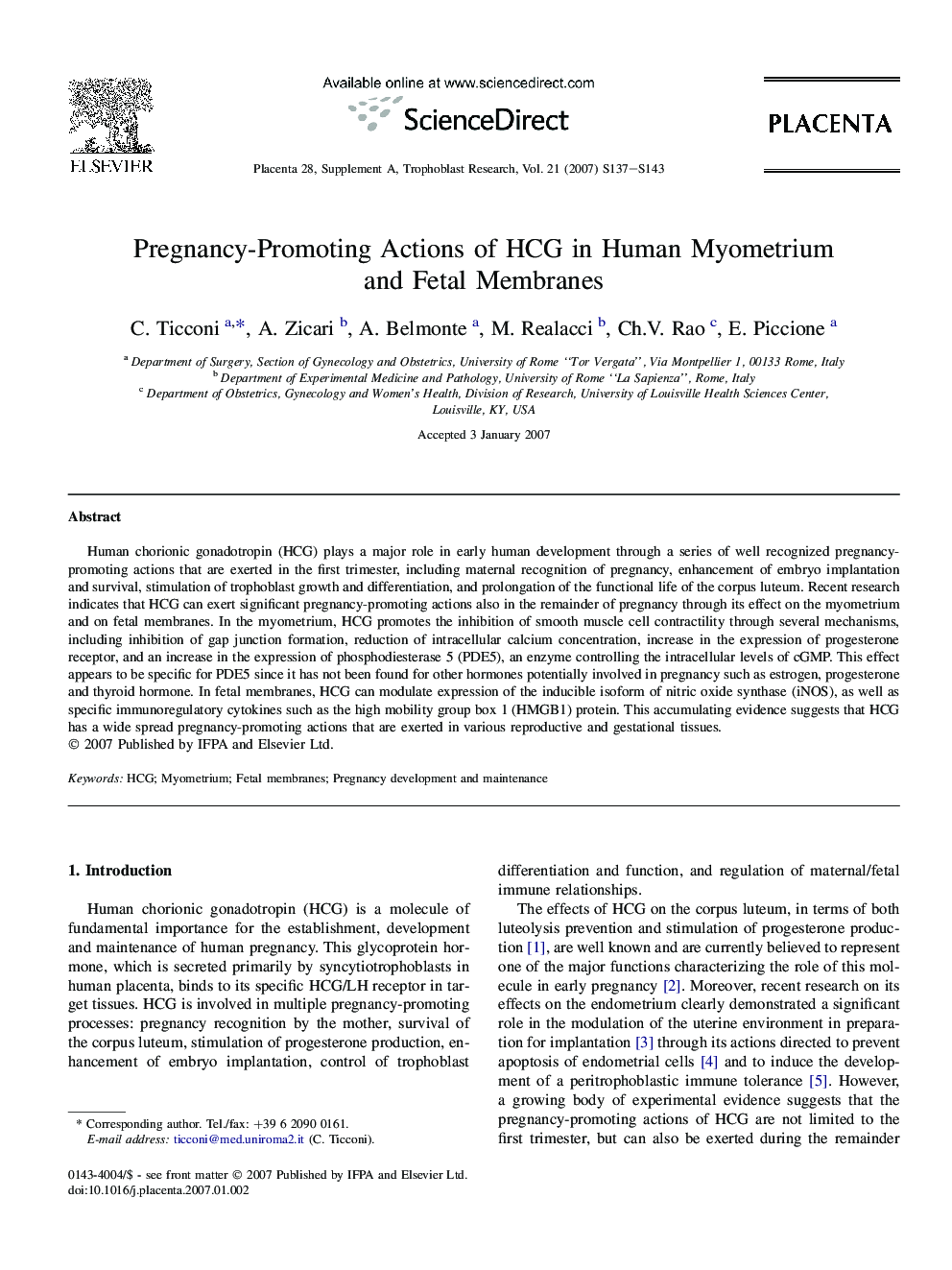| Article ID | Journal | Published Year | Pages | File Type |
|---|---|---|---|---|
| 5896339 | Placenta | 2007 | 7 Pages |
Abstract
Human chorionic gonadotropin (HCG) plays a major role in early human development through a series of well recognized pregnancy-promoting actions that are exerted in the first trimester, including maternal recognition of pregnancy, enhancement of embryo implantation and survival, stimulation of trophoblast growth and differentiation, and prolongation of the functional life of the corpus luteum. Recent research indicates that HCG can exert significant pregnancy-promoting actions also in the remainder of pregnancy through its effect on the myometrium and on fetal membranes. In the myometrium, HCG promotes the inhibition of smooth muscle cell contractility through several mechanisms, including inhibition of gap junction formation, reduction of intracellular calcium concentration, increase in the expression of progesterone receptor, and an increase in the expression of phosphodiesterase 5 (PDE5), an enzyme controlling the intracellular levels of cGMP. This effect appears to be specific for PDE5 since it has not been found for other hormones potentially involved in pregnancy such as estrogen, progesterone and thyroid hormone. In fetal membranes, HCG can modulate expression of the inducible isoform of nitric oxide synthase (iNOS), as well as specific immunoregulatory cytokines such as the high mobility group box 1 (HMGB1) protein. This accumulating evidence suggests that HCG has a wide spread pregnancy-promoting actions that are exerted in various reproductive and gestational tissues.
Keywords
Related Topics
Life Sciences
Biochemistry, Genetics and Molecular Biology
Developmental Biology
Authors
C. Ticconi, A. Zicari, A. Belmonte, M. Realacci, Ch.V. Rao, E. Piccione,
